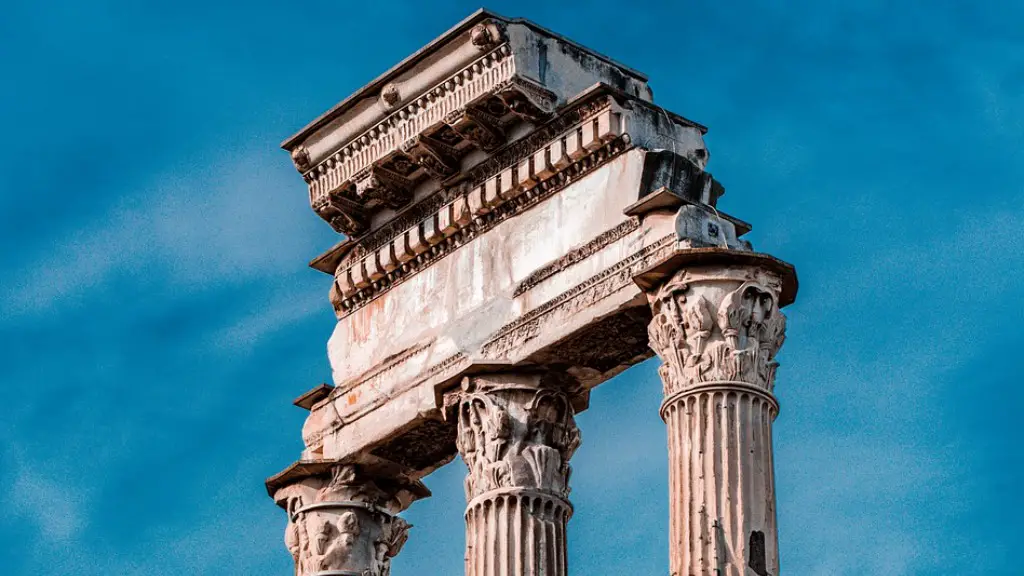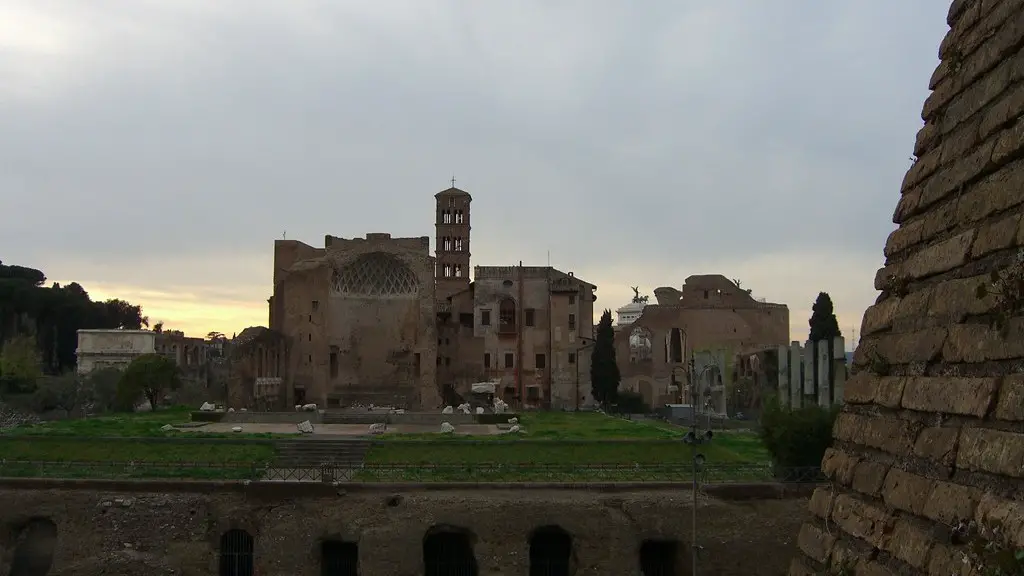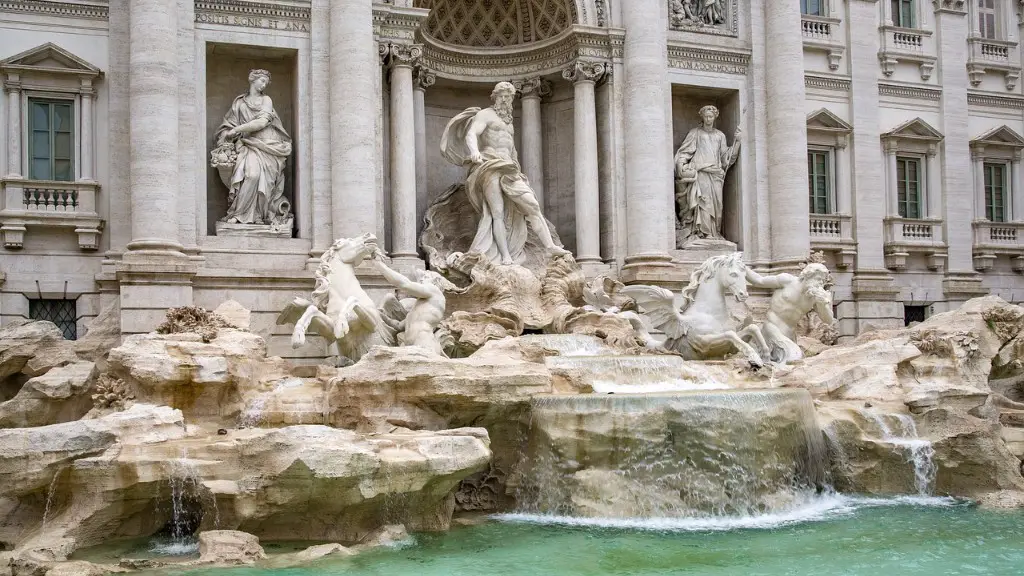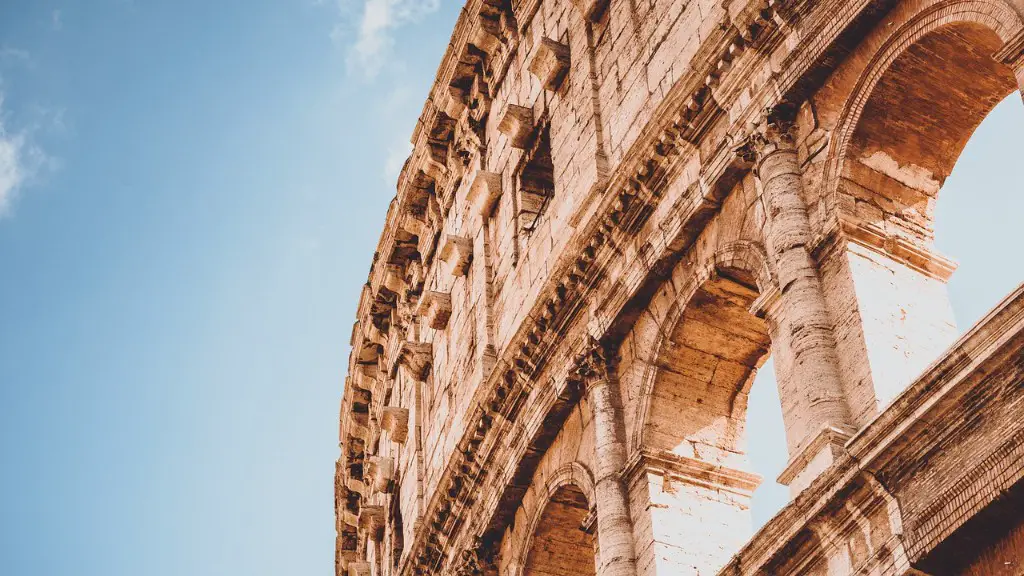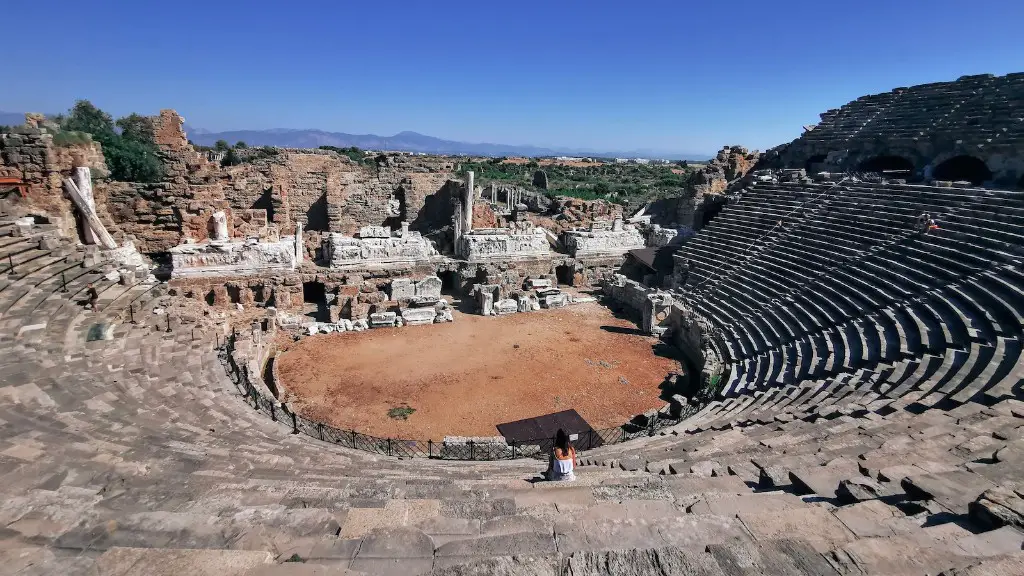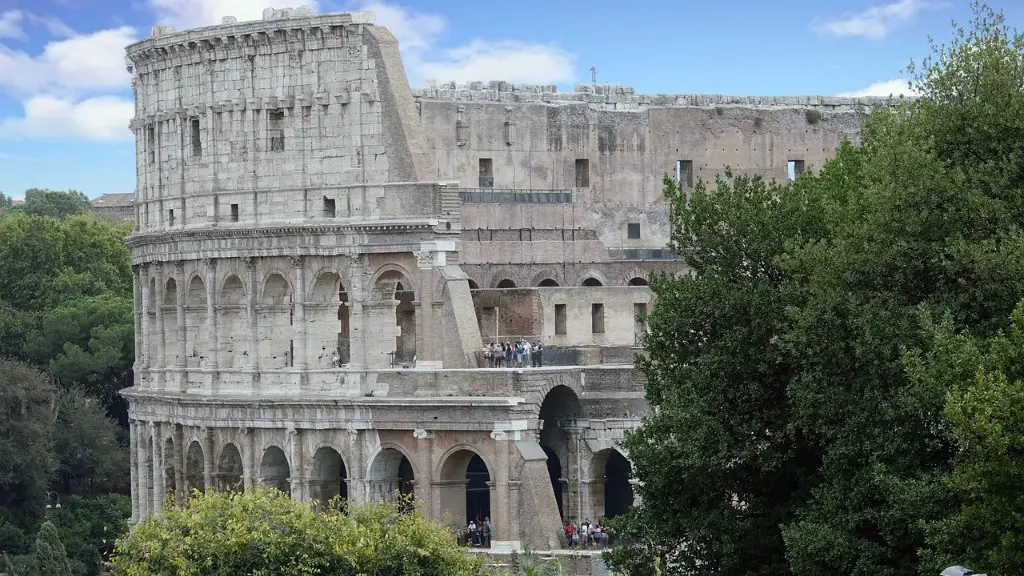Ancient Rome is one of the most admired and influential civilizations in the world, having left an indelible mark on culture, politics and architecture. Its lasting legacy has touched lives across the world, and its impact continues to be felt in many areas of modern life. From its beginnings in the 8th century BC, Rome rapidly grew to become a formidable and powerful empire. Not only did it expand its own territories, it also absorbed the cultures of those it conquered and turned them into Roman influences. As a result, the Roman world has proven to be impressively influential in a number of ways.
Politically, Rome led the way in developing legal systems that have been a model for the modern world. Rome’s Twelve Tables of Law codified a form of justice that still influences standards today. Additionally, Rome’s Senate system publicised and debated the issues of the day, giving rise to modern democracy. Beyond political influence, Rome developed art, literature, philosophy and a thriving trade system that had lasting effects. Rome’s famous aqueducts, roads and architectural marvels still inspire awe in travellers today. The Roman Colosseum and Pantheon, two of the most enduring ancient structures, remain the epitomes of Roman capability and genius.
Roman emperors were also influential in their own right. Julius Caesar, Augustus and Constantine each left their own unique mark on Rome, making their home an important centre in the ancient world. They extended Rome’s rule, as well as introducing groundbreaking reforms and popularising previously unknown customs, religions and literature. Their likes remain inspirations in the present, being remembered through iconic sculptures, paintings and coins. Caesar and Augustus, in particular, will never be forgotten, thanks to their importance in the revolutions that ushered in the Roman Empire.
It would be hard to forget Rome’s influence on art, too. Ancient Roman art was often conveyed through sculptures, frescoes and mosaics. These pieces, seen in museums around the world, remain some of the most treasured works in classical antiquity.Roman portraiture, also, has had a clear impact on modern art. Roman frescoes and mosaics, featuring iconic figures from the past, continue to be admired by modern audiences. Rome had its finger in many art forms – its theatre was renowned, with the Coliseum playing host to plays, chariot races, animal hunting and gladiatorial combat.
At its peak, Ancient Rome was a thriving and model society. Even today, it remains an important source of inspiration. From the legal systems it developed to the art it inspired, Rome has shaped the world. Its lasting legacy can be felt in many parts of modern life, and it will continue to be remembered for generations to come.
Roman politics
Roman politics has had a great influence on the modern world. By introducing important concepts such as democracy, the rule of law and public debate, Rome developed a model for a system of governance that is still admired and replicated today. Rome’s Senate system publicised and debated the issues of the day, giving rise to modern democracy, and its Twelve Tables of Law went beyond simple regulations to codify a system of justice that still influences standards today. Additionally, the imperial rules of the Roman Republic and Empire led to the creation of the Mercantilist system, which is still alive and well to this day.
Roman politics also had a great impact on philosophy. The Stoic and Epicurean schools of philosophy, which provided frameworks for understanding human behaviour and the universe, grew out of the Roman Republic. These philosophical schools drew on the ideal of the Roman citizen, whose life was grounded in the importance of law and civic duty, and in the concept of stoicism, which emphasised strength, courage and self-control – values that continue to be applicable in the modern day.
The concept of unity was also a crucial part of Roman political philosophy, as it ensured that all citizens had a sense of belonging, as well as loyalty and responsibility to one another. This strengthened the Roman state, making it more powerful and efficient, and making it more likely to survive and thrive in the face of external pressures. The legacy of this idea of unity can still be felt today in the European Union, which is based on a common set of laws and values.
In conclusion, the impact of Roman politics on the modern world has been immense. From the development of democracy to its influence on philosophy, Rome has provided much of the very fabric upon which modern society is based. Its innovations in governance, law and societal organisation have been inspiring and enduring, and it is clear why the Romans are remembered for their political achievements.
Roman culture
Roman culture was a vibrant mix of different artistic, literary and culinary influences from the parts of the world it conquered. These influences included the religions of the conquered peoples, such as Mithraism and Christianity, as well as their languages, literature and art. As a result, the Roman world was a diverse and multifaceted one, where different cultural forms had their freedom to flourish and be appreciated.
One of the major aspects of Roman culture was its art. Rome practised the art of mosaic, painting and sculpture, and created architectural masterpieces such as the Colosseum and the Pantheon. Roman art was also characterised by its portraiture, which often focused on powerful men, such as emperors and senators. Roman portraiture was used as a tool to communicate with the public, often depicting the emperors in flattering images that emphasised their greatness and strength.
Moreover, Ancient Rome was known for its literature, which was heavily influenced by the region’s Greek and Roman neighbours. Roman writers developed the epic form, which was then adopted by the western world and used to tell a variety of stories. Some of Rome’s most famous authors included Virgil, Horace and Ovid, whose works are still studied and appreciated by literary scholars.
In conclusion, Ancient Rome was a vivid and vibrant culture. Its art, literature and religious practices have had a huge influence on the modern world, and it is still remembered for its abundance of creativity. Its monuments and architecture have endured, and its cultural heritage still fascinates and delights audiences today.
Roman Religion
Religion was an important part of life in Ancient Rome, and it was highly ritualised and ritualised. Romans adopted a variety of beliefs, including Polytheism, Mithraism, Judaism and Christianity, and these faiths were often syncretised and combined. This is evident in the Roman pantheon, which includes gods and goddesses from different religions, as well as the reign of Emperor Constantine, who was instrumental in the spread of Christianity throughout Europe.
Roman religion was also highly visible in public life, with dedicated festivals and rituals taking place in honour of different gods and goddesses. Sacrifices were made to the gods, and citizens often sought their blessing and guidance. These rituals and offerings were all part of the ancestral belief system, which saw the importance of appeasing the gods and building strong relationships with them.
The other major part of Roman religion was the concept of fate and destiny. This idea placed importance on the interpretation of natural signs and coincidences, as well as on the idea of a higher power who had the power to grant wishes or bring good fortune. It was in this belief that Rome’s most famous soothsayers and augurs prospered, offering their interpretations of the signs sent by the gods. The legacy of these individuals can still be seen in the contemporary practice of fortune-telling and Tarot reading.
In conclusion, Roman religion was a crucial part of life in Ancient Rome. Its gods, goddesses and priests played a significant role in public life, and its belief in fate and destiny is still a part of the Western world’s consciousness today. Its influence on modern religious practices, such as fortune-telling and the interpretation of symbols, remains strong, providing evidence of its lasting legacy.
Roman Technology
Ancient Rome was a standout civilization in terms of its technological advancements. Engineering and construction techniques were used to create elaborate monuments, aqueducts, roads and bridges that were unlike anything else in the ancient world. Rome’s sophisticated engineering skills and innovative approach to technology made it a powerhouse of the ancient world, and it is still admired today.
Roman engineering was highly advanced, and it was used in a wide range of projects. For example, Rome was responsible for the construction of numerous roads, bridges and aqueducts. These establishments were carefully built to provide civilians with access to water, as well as improving their transportation and daily lives. Rome’s engineering feats remain standing as a testament to its technological capability, with structures such as the Colosseum and Pantheon proving to be remarkable examples of Roman engineering.
Rome also made exceptional advances in medicine, coming up with groundbreaking treatments and technologies. Rome was the first civilization to actively study and document medical conditions, paving the way for modern medical practices. Roman doctors also pioneered numerous medical procedures and treatments, such as the use of plasters and ointments, and the first emergency room.
In conclusion, Ancient Rome is remembered for its technological capabilities. From its engineering feats to its medical findings, Rome pushed the boundaries of the ancient world, and its legacy persists in modern technology. Rome’s enduring legacy has interpreted contributions still evident in the present day, and its influence on science, engineering and medicine will always remain remarkable.
